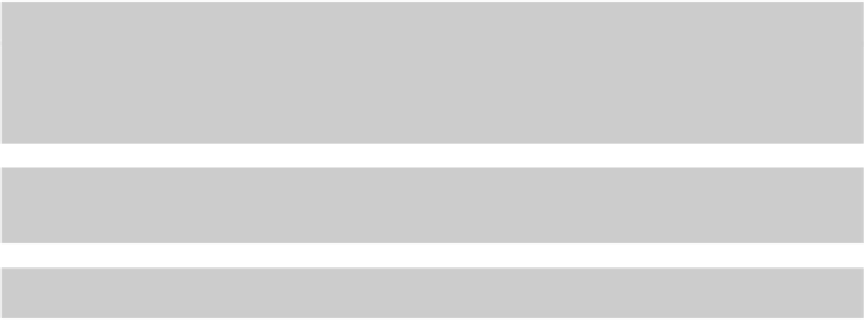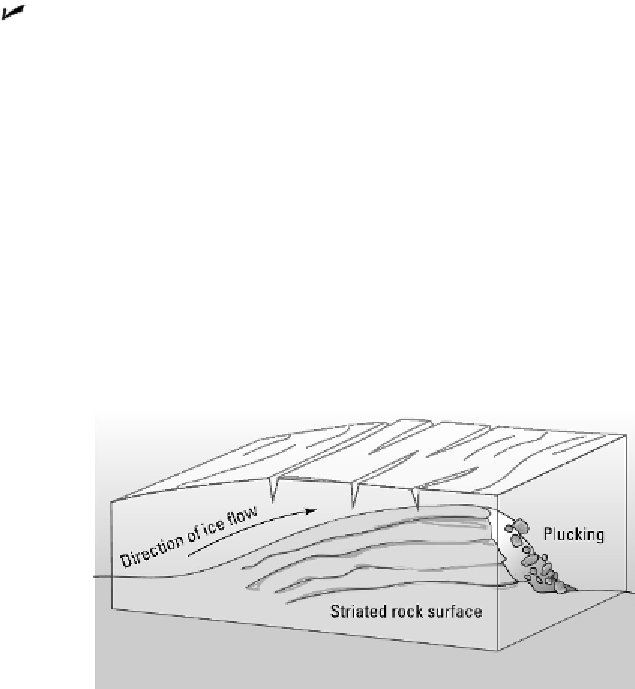Geology Reference
In-Depth Information
Horns:
Similar to arêtes,
horns
are created by multiple cirques on a mountain. In
this case, three or more cirques create a sharply pointed peak in the landscape by
eroding rocks and sediments from many sides of a mountaintop.
Ice sheet glacial erosion
Ice sheets are much larger than alpine or valley glaciers and, therefore, leave much lar-
ger erosional features on the landscape when they disappear.
A common feature where ice sheets have sculpted the bedrock is a
roche moutonnée.
A
roche moutonnée is created when ice smoothes and polishes the uphill side of a bed-
rock hill, while plucking and removing rocks from the downhill side as it flows across.
This process is illustrated in Figure 13-3.
Figure 13-3:
How
ice sheet flow cre-
ates a roche mou-
tonnée.
French lessons
The term
rochemoutonnée
is translated from French as “sheep rock.” Geologists in eighteenth-century
France observed the smoothed-over humps on the landscape and thought they looked like sheep. (Sim-
ilar landscape features, without the plucking of rocks on the downslope side, are called
whalebacks
because they resemble the humped backs of whales in the ocean.)
The term
paternoster
translates to “Our Father,” referencing the prayers that are said along the rosary
string. These glacial lakes are named
paternosterlakes
because they look like a chain of rosary beads
in a valley.
Other glacial features have straightforward translations, such as
arêtes
(“knife-like”) and
cirques
(“ring”).








